Safe and efficient hydrogen fuel handling and technology Useful links Contact...
SINTEF search

Master Project Description Green AI aims to make artificial intelligence more environmentally sustainable by reducing computational costs and energy consumption. As the demand for AI applications grows, edge devices like Raspberry Pi are emerging as vital components to facilitate local, real-time computations...

...starting from formally verified design-time trust models, and risk assessment processes to secure lifecycle procedures and real-time conformity certificates based on novel runtime attestation mechanisms and distributed ledgers. The added value and effectiveness of the ENTRUST Framework will be evaluated...
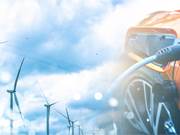
...industrial processes and efficient transmission of electric power. Power electronic converters is a key technology for conversion and control of electric power and will be crucial for successful electrification. The technology is rapidly evolving, providing much faster switching rates and higher voltages...
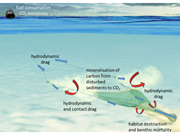
...minimise seabed contact, and decrease the drag of fishing gear. Here we will carry out comprehensive reviews of the approaches and methods used, and evaluate and rank their efficacy. This will involve all partners and include both modifications that have been tested scientifically and published in peer-reviewed...
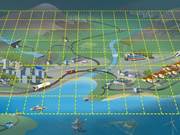
...battling climate change and for ensuring industrial growth and prosperity. NTNU, Electro building O.S. Bragstads plass 2A, Trondheim Smart Grids are an integral part of this. European alignement and collaboration across technological and geographical borders in the sector is key, and the European Energy...

...mechanical engineer, best known for his work as a Formula One racing car designer with Scuderia Ferrari during the 1960s and 1970s. He will hold a technical lecture on aerodynamics, mechanics and internal combustion engines. The lecture is open. The event will be in EL2, find the room here. ...

Presenters: Geir Skaugen and Daniel Rohde, Research Scientists, SINTEF Energy Gas turbine exhaust gas is the main source of CO2 emissions on the Norwegian Continental Shelf. Utilizing the heat that the exhaust gas contains to run a heat-to-power cycle can significantly reduce CO2 emissions. A key component...

Salvatore D'Arco; Regards Hans Christian Bolstad; Workshop Program 09:00 Welcome and introduction to program and speakers by host / practical aspects - Dr. Hans Chr Bolstad, SINTEF 09:15 Introduction to the topic HVDC - Prof. Dr.-Ing. Lutz Hofmann...

...through the food we eat. And most this salt comes from processed foods. In collaboration with the food industry, SINTEF has researched how to reduce the amount of salt in products, such as fish pudding, liver pâté, shrimp, brined ham, cured sausages, cured ham, processed cheese and pickled herring, without...
The body’s own signalling system provides the key to new diagnostic tools and personalized medicine
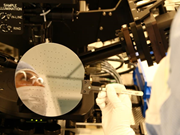
Researcher and blog author Elizaveta Vereshchagina in the laboratory. Microfluidics technology has a variety of applications, including DNA analysis and organ-on-a-chip. The photo shows a 6-inch silicon wafer during processing in cleanroom. The dots are inlets to and outlets from the microfluidic channel...
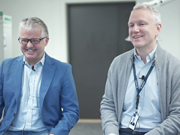
...efficiency is the one research action that contributes to all 17 United Nations Sustainable Development Goals. It reduces emissions, increases efficiency and provides surplus energy for other uses. The product that comes out of the processes will be produced for less input. So, more value for less input”,...
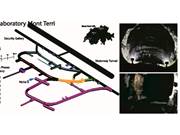
...transport fuel. The large volumes of CO2 produced in the natural gas reforming H2 manufacture require a coupling with direct CO2 separation techniques, and safe geological storage. https://blog.sintef.com/sintefenergy/updates-mont-terri-experiment/ ...
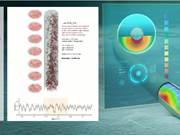
This project generated new and validated functionalities in the transient multiphase simulator LedaFlow(TM) in a new area of application: flow assurance predictions for well and risers. Reliable predictions of pressure loss and liquid content in vertical flows under stationary conditions for all types...
The Norwegian University of Science and Technology (NTNU) has entered into a strategic alliance with the research organization SINTEF to develop the technological environment in Trondheim internationally. The aim is to be among the world leaders in selected areas of R&D. On the domestic scene both institutions...
August 22nd 2005, during the BRU Seminar, NTNU and SINTEF signed an agreement for the establishment of a new Gemini Center in the area of "Better Resource Utilization of Oil and Gas". On December 7th 2005, the center was made official by NTNU´s rector and SINTEF´s leader through issuing diplomas to the...

...the black membrane in cod to salted fish and klippfish. This will help to reduce the physical workload of the operator that removes the black membrane manually. Background There is a desire in the salt fish and klippfish industry to automate the strenuous and repetitive one-sided operations. This is...

...area than earlier, and there is a need to increase the capacity of the hospital. The planned new buildings for emergency services as well as a woman/child center in addition to the other buildings. SINTEF was commissioned to analyse patient care in emergency and operating rooms, and look at how to best...
NaProCs – Nanoceramics – a new class of proton conductors for hydrogen fuel cells and electrolysers
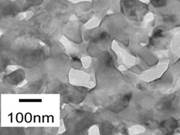
NaProCs project aims to develop a new class of fuel cells and other devices for hydrogen, operating at temperatures attractive for transportation and mobile applications. This comes timely when fuel cell cars are making their way to commercialisation and hydrogen needs to be produced in a distributed manner...
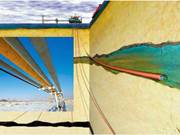
...related to transport and storage of CO2-rich mixtures from various CO2 sources to enable realisation of safer and more cost-efficient solutions for CCS. IMPACTS is addressing the impact of impurities in captured CO2, from power plants and other CO2-intensive industries, on CO2 transport and storage. This encompasses...